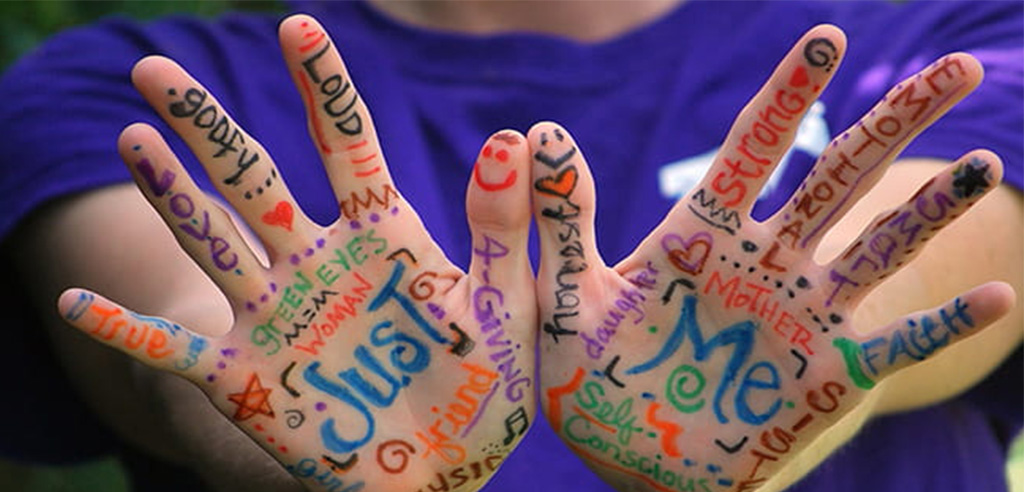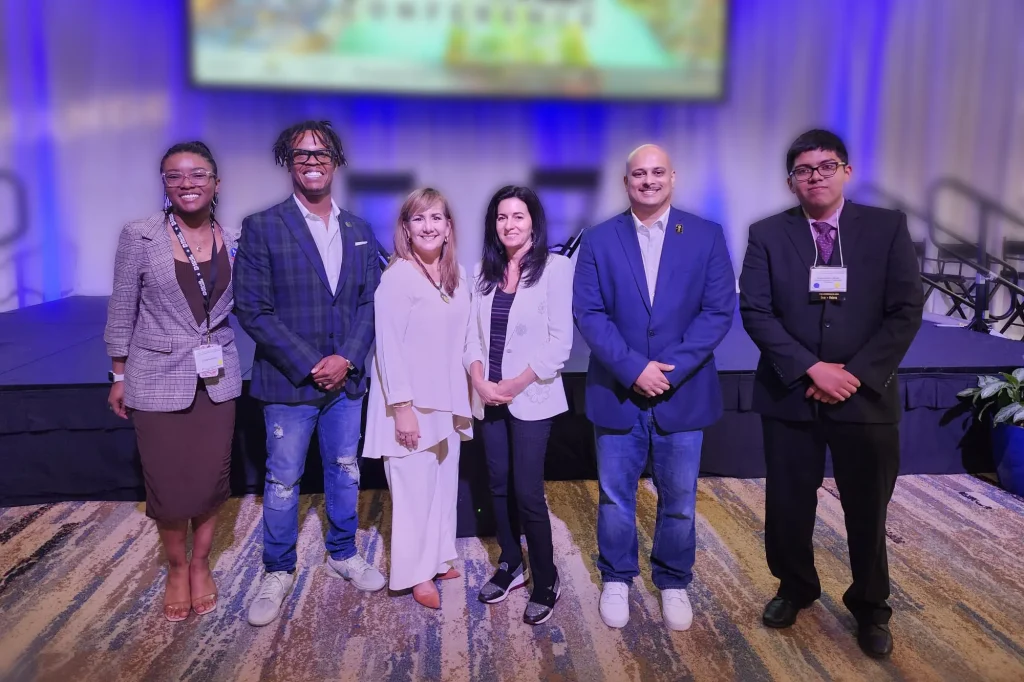The following is an excerpt: “From INTENT to IMPACT: The 5 Dualities of Diversity and Inclusion”
When my career journey took me on a four-hour flight from Puerto Rico to New Jersey for my first corporate relocation, the journey came with the unanticipated consequence of labeling me as “Hispanic”, as a “Latina”. I knew the term, for course, but it had not been used before to identify ME at work. I soon realized that it was full of meaning, which was not defined by me, but by the ideas and preconceived notions of others. I chose to get curious on thinking about myself as Hispanic, even more, as Latina, so I took it on as a type of identity challenge.
One day, I was on my way to a mid-morning meeting at my company’s headquarters. As other colleagues walked into the conference room, I noticed they all looked more or less the same: somber, serious and even sad. At least, that is how it looked to me. They were all dressed in strict black or gray. I couldn’t help thinking that the turquoise color of my blazer was way brighter than any piece of wardrobe, meeting materials, or furnishings in that room. As we waited for the meeting to begin, we made small talk and reacted to a few jokes that somebody made. That’s when my colorful attire became a match to my laughter, which sounded louder than anyone else’s in the room. Needless to say, I was feeling a little bit out of place, but that was still okay. I was confident in myself and knew I had a lot to contribute in the conversation.
Once the meeting started, I practiced the Catholic school habit of raising my hand to wait for a turn to speak. However, I noticed no one else was doing that. Other people seemed to have a highly developed conversation skill. They had the ability to determine when someone else was about to finish a sentence, and then jump in, like people merging from the on-ramp to the highway.
When it finally seemed that everyone else had expressed their opinion, I offered my thoughts on the topic being discussed. That was when I made the fourth most important observation of that day: the “eloquence” of my hands. I hadn’t paid much attention to it before that day, but when I speak, my hands would have the tendency to take on a life of their own in front of my face.
As the meeting got close to an end, I wondered if my words were a bit off that day, since I was not getting much of a reaction to my comments. I couldn’t help thinking… Were all of my differences becoming a distraction from what I had to say?
At the end of the session, my observational mode wrapped up when somebody asked about the origin of my accent. To my surprise, I thought, “Do I have an accent?”
Don’t get me wrong, I was not naïve about my intonation. What I learned that day was how much my wardrobe, my laughter, my hand gestures, and now my accent separated me from the norms that surrounded me. After I left that meeting, I had to physically stop in the hallway, trying to figure out: What does this all mean to me?
Over the next few months, I got similar questions and comments. Someone even said at one point that, for being Latina, I didn’t really look like one. I felt confused! Was who I am getting in the way of what I wanted to do? Was it becoming a deterrent to my career aspirations? Even more than by virtue of my gender, was I reaching the proverbial glass ceiling due to my cultural identity?
I sensed that I had walked into and stood on a cultural landmine and I was waiting for it to go off—or not. What would I do now? Were these defining elements of who I am, or were there any other things that really defined me? Did I have to choose what or who I was? And why? Did I need to change who I was to maintain my career progression?
Choices of Affirmation
My Latina awakening was a moment of truth, when the differences I was discovering, and the ones I still had to uncover, contributed to the feeling that somehow, I didn’t belong in the environment where I so much wanted to fit in. I could choose to change the colors of my wardrobe, tone down my laughter, make my hands “mute”. I could, and for some time, and in specific instances, I actually did.
But I kept asking myself, where does it stop? I could have taken accent reduction lessons, made my communication less conversational and talked in bullet-point fashion. I could decide to drop my maiden name for my married name, or change its pronunciation to “Maneca Dyas,” instead of Mónica Díaz—I could, but I did not. That’s where I drew a line, when it came to the decision of how to pronounce my own name. Maybe I would have made a different decision if my name was too long, but that was not the case. I had to think, to figure out which elements had a deeper meaning to me, which ones defined who I am: my heritage, my personality, and my identity. Those could not be compromised in achieving what I wanted to do.
It took me a while to understand that it was not about changing myself. It was about creating myself, about evolving my own self, about becoming a better version of myself. The most important thing was that, at every step of the way, I had to know and feel that it was my choice, not anyone else’s choice. As long as I was clear on what I was deciding and why, I would be ok. I would still be myself. I could decide to adapt to my audience, as long as I was still comfortable in my own skin. Still, it was important to find ways to reach that balance between who I was and who I wanted to be, while being me. I had to decide which were the differences that would become my affirmations. That would become the balance between what I adapted to succeed and what I disrupted to transform.
Marketing and branding professionals tell their clients to think about the unique attributes of their products. Those unique attributes, properly showcased and nurtured, are what makes a brand or company stand out from their competitors. So I wondered, why not use what makes me different to positively “differentiate” myself? To stand out for what is unique in me? I could do that, so I did. My affirmations then became easier to declare:
- Color. I chose color, which gives me energy and exudes energy. My Latinidad is expressed in vivid color, in how I dress, the materials I use to present content to an audience, and the color of the seats in my car! I would care less if the expression of color triggers a stereotypical perception in others. That is my space of affirmation and I celebrate it.
- Accent. I chose my accent. I would not conceal it or “work” on it. I would acknowledge it, because it reminds me where I come from and connects me with my culture and the language I use for prayer. I want to still recognize there is a Latina in my words, as much as in my heart.
- Expression. Although I may be a bit louder or more energetic than others, I embrace it. It’s my way of celebrating life and living my life. I can adjust my tone when necessary or appropriate, yet being an expressive Latina is my true self.
Lessons Learned
- Know what makes you great. Figure out your most salient strengths, the ones you recognize in yourself and the ones others recognize in you. Balance your safer space of introspection with your potential vulnerability to the perspective of others.
- Let your differences become your differentiator. It’s your choice. What are the differences that really define you, the ones that have a deeper meaning to you? There are no good or bad decisions, only your choices.
- Don’t “sell” yourself, share yourself. Acknowledge who you are in front of others. Don’t think you have to sell yourself as you adapt to a new environment. Once you have determined which are your affirmations, share them with others. This is the space where leadership and personal authenticity begins. Your authenticity as a leader will show others that they can authentically be themselves in front of you as well.
Do you remember your awakening?
Have you declared the affirmations of your identity?
This is an excerpt: From INTENT to IMPACT – The 5 Dualities of Diversity and Inclusion. Get it on Amazon: https://lnkd.in/eHeMFwg


